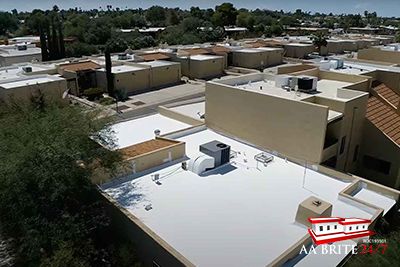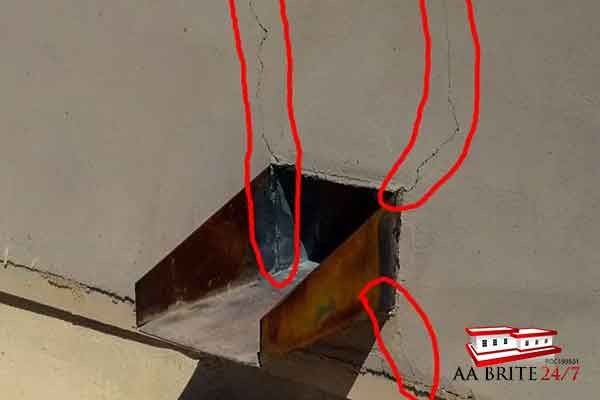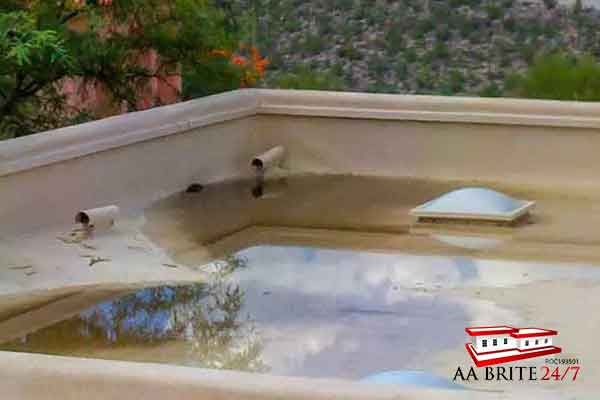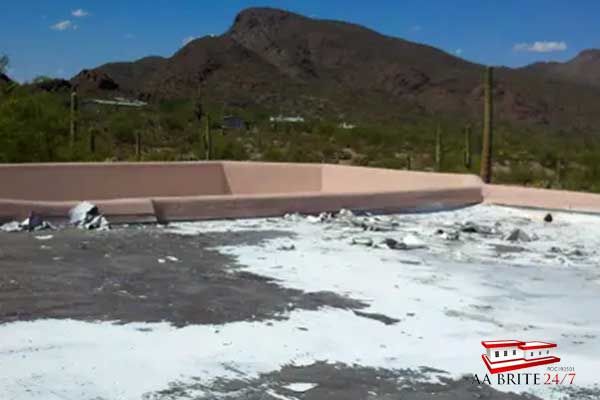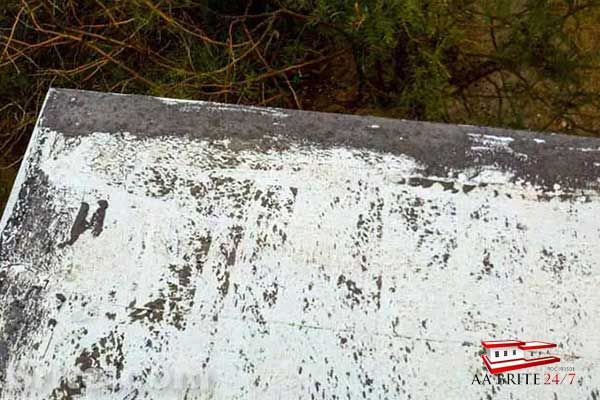Roof Blisters – What Are They and What to Do About Them
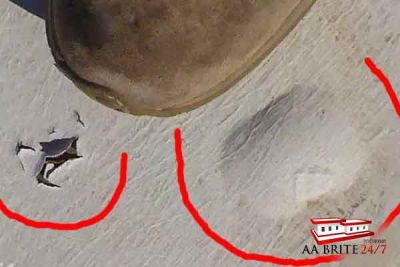
What Are Roof Blisters?
Roof blisters are raised pockets of air or moisture that develop beneath the layers of your roof coating. Generally they are created when water gets under your roof coating and can’t get back out. The moisture expands and creates a blister, weakening your roof.
What do roof blisters look like?
Shown below are a multiple photos of flat roof or cool coated roof blisters.
Some are not so bad and others show a roof that needs quite a bit more work.
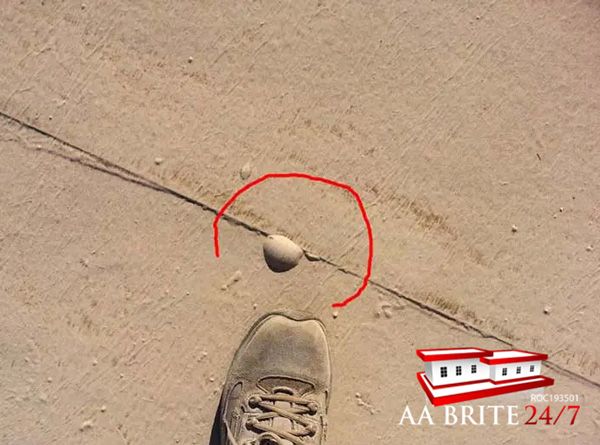

A single blister on a seam. Water somehow got under the roof coating and couldn’t get back out. It expanded as vapor and made this blister. Left alone it might take several years for the daily heat cycle to dry and crack the material in this location.
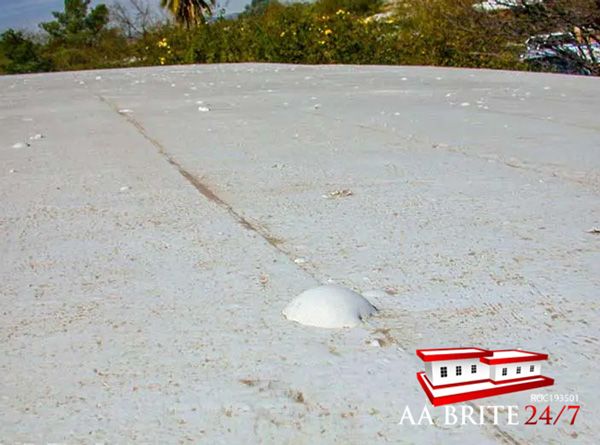

A roof with more blisters on it than in the first picture. This still isn’t too big a deal from a patch and re-coat the roof point of view. The blisters shown in this photo might add 2 or three hours to the job.


When I’m doing quotes I try not to step on the blisters and break them open. Once broken water is more likely to get under the coating or leak into the roof. Generally speaking unless its at a scupper or in a ponding area one broken blister is not an emergency.


This roof has way more blisters on it than normal. If memory serves me correctly this is about a quarter of the roof and the blisters added about 8 hours to the job.


A Large and thick blister. I frequently have to push on these with my fingers to see if they are a blister or if this is just a lump of tar from when the roof was mopped with boiling tar. Its pretty common for there to be lumps on a roof thats hot mopped with tar. The only way to tell a blister with thick skin on it from a tar lump is to push on it and see if its soft or hard.
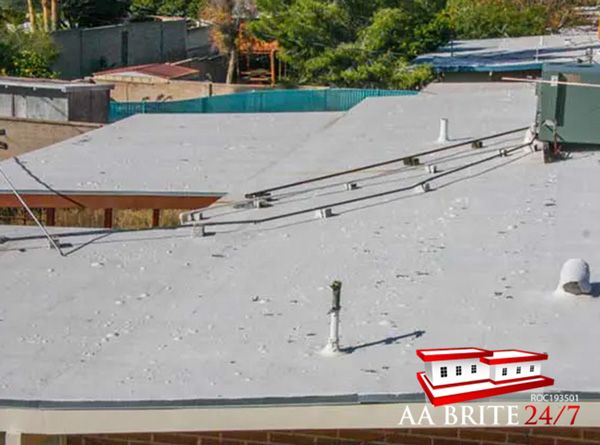

We didn’t coat this roof. It was next door to a house we were working on. Getting rid of the blisters, patching and re-coating this wouldn’t be too big a deal.
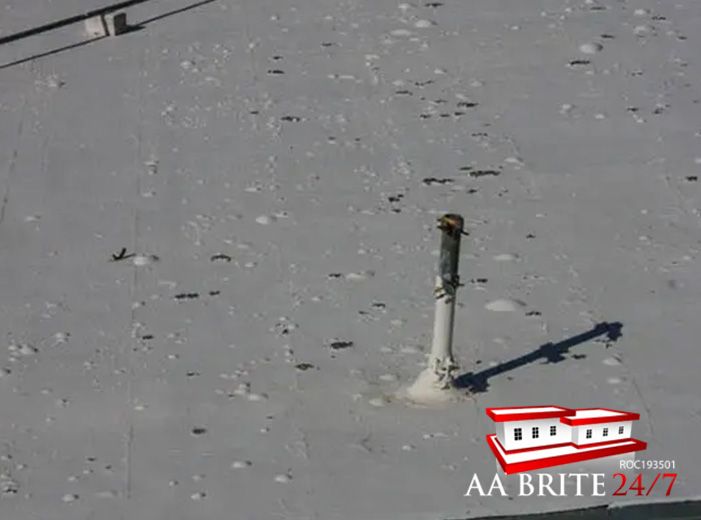

The same roof as in the above photo, only zoomed in on the vent pipe. There are even more blisters when you look closer. Lots of them have popped or cracked open.
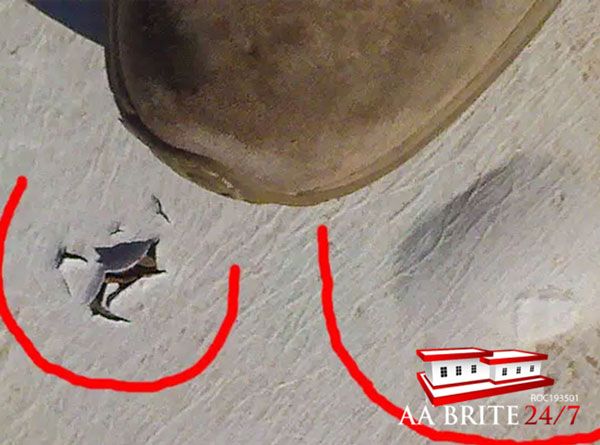

A closer view of a broken blister, and one that hasn’t broken.
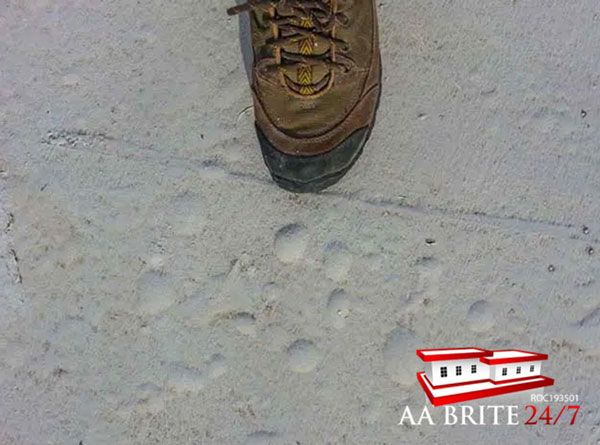

These are also thick skinned blisters. Compare them to the second and third photos. These are not very tall and not very round. Generally the taller and rounder ones indicate a thicker roof coating. I.E. If the blister looks like and egg the skin is probably thin. If the blister looks like syrup poured cold, the the skin is thick.
What should I do about my roof blisters?
If you notice roof blisters on your roof feel free to give us a call for a free inspection! If your roof needs to be repaired or replaced we’re happy to give you a free quote!
To prevent roof blisters in the future, it’s important to ensure that your roof is recoated according to manufacturer’s specifications as well as industry best practices.
When you roof is recoated, it’s also very important to keep your roof cleaned and well maintained.
More Roof Problems You May Have


